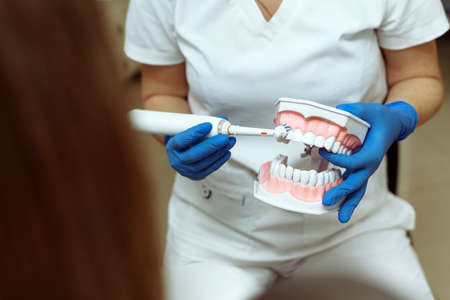Introduction to Dental and Vision Insurance in the US
If you’ve ever wondered why your medical insurance doesn’t cover your annual eye exam or that filling at the dentist, you’re not alone. In the US, dental and vision insurance are often totally separate from standard health insurance plans. This separation can lead to confusion—and sometimes expensive surprises—when it comes to out-of-pocket costs for routine care or emergencies.
How Dental and Vision Insurance Plans Work
Dental and vision insurance are designed to help cover specific types of care that general health insurance usually leaves out. Here’s a quick overview of how these plans generally work in the US:
| Type of Insurance | What It Covers | Typical Exclusions |
|---|---|---|
| Dental Insurance | Preventive care (cleanings, exams), basic procedures (fillings), major procedures (crowns, root canals) | Cosmetic dentistry, orthodontics (sometimes covered, often limited) |
| Vision Insurance | Eye exams, glasses, contact lenses, some corrective surgeries (rare) | Sunglasses without prescription, non-prescription eyewear |
Common Coverage Details
- Dental insurance: Usually covers two cleanings per year, X-rays once a year, and partial coverage for procedures like fillings or crowns. There’s often an annual maximum benefit limit (for example, $1,500 per year).
- Vision insurance: Typically covers one eye exam annually and helps pay for glasses or contact lenses up to a certain dollar amount. Some plans offer discounts on laser vision correction.
- Waiting periods: Many plans have waiting periods for major services—meaning if you buy a plan today, you might need to wait 6-12 months before it covers things like crowns or root canals.
- Network providers: You’ll usually save more if you visit dentists or optometrists in your plan’s network.
Why Dental and Vision Plans Are Separate From Health Insurance
This all goes back to how insurance developed in the US. Medical insurance started by focusing on hospital stays and doctor visits. Dental and vision were considered “extras,” so they evolved into their own plans. Today, most employers offer dental and vision as optional add-ons—or you may need to buy them separately if you’re self-employed or shopping on your own.
The Bottom Line: Understanding Coverage Gaps
The key takeaway is that having standard health insurance doesn’t mean you’re protected from all healthcare costs. Routine dental cleanings or a pair of glasses could end up costing you hundreds of dollars out of pocket if you don’t have dedicated dental or vision coverage. In the next section, we’ll break down exactly what those financial risks look like for everyday Americans.
2. Typical Out-of-Pocket Costs Without Coverage
Many Americans are surprised by how quickly dental and vision expenses can add up when they don’t have insurance. Let’s break down some of the most common costs you might face if you’re paying out-of-pocket.
Examples of Average Dental Costs
| Procedure | Average Cost (No Insurance) |
|---|---|
| Routine Dental Cleaning | $100 – $300 per visit |
| Cavity Filling (Composite) | $150 – $400 per tooth |
| Tooth Extraction | $200 – $700 per tooth |
| Root Canal (Molar) | $800 – $1,500 per tooth |
| Crown | $900 – $2,000 each |
| Emergency Visit (Excluding Treatment) | $100 – $200 just for the exam |
Examples of Average Vision Costs
| Service or Product | Average Cost (No Insurance) |
|---|---|
| Comprehensive Eye Exam | $100 – $250 per exam |
| Prescription Glasses (Frames + Lenses) | $150 – $400 per pair (can be higher for designer brands or specialty lenses) |
| Contact Lenses (Annual Supply) | $200 – $500 per year |
| Emergency Eye Visit (Excluding Treatment) | $150 – $300 just for the consultation |
The Real-Life Impact: An Example Scenario
If you skip dental and vision insurance, even a healthy adult who visits the dentist twice a year and gets an annual eye exam will likely pay:
- Dental cleanings: 2 x $200 = $400/year (just for cleanings, no problems found!)
- Eye exam: 1 x $150 = $150/year (excluding glasses or contacts)
If any issues pop up—say, you need a filling and a new pair of glasses in the same year—that could add another $200 (filling) and $300 (glasses), bringing your total to over $1,000 out-of-pocket without insurance. And that’s without considering emergencies or more complex treatments.
Refusal of Coverage Reminder:
It’s important to remember that without dental or vision insurance, you’ll be responsible for 100% of these costs, with no help from an insurer—even if it’s an emergency. There’s no safety net if something unexpected happens.

3. Real-Life Scenarios: Unexpected Expenses
How Skipping Dental and Vision Insurance Can Break the Bank
Many people in the US think skipping dental or vision insurance will save them money. But real-life stories show how quickly medical bills can pile up without coverage. Here are a few scenarios that highlight just how expensive things can get when you’re uninsured:
Case Study 1: Emergency Tooth Extraction
Meet Sarah: Sarah is a single mom who decided to skip dental insurance to save on monthly expenses. When she developed a severe toothache, she ignored it until the pain became unbearable. A visit to the emergency dentist revealed an infected tooth that needed immediate extraction.
| Service | Estimated Cost (Without Insurance) |
|---|---|
| Emergency Exam & X-ray | $150 |
| Tooth Extraction | $300 – $600 per tooth |
| Pain Medication & Antibiotics | $100+ |
| Total Out-of-Pocket Cost | $550 – $850+ |
If Sarah had dental insurance, her out-of-pocket cost could have been less than $100 for the same treatment.
Case Study 2: Vision Trouble at School
The Johnson Family: The Johnsons have two kids and decided to drop vision insurance this year. When their son, Ethan, started struggling in school, they learned he needed glasses.
| Service | Estimated Cost (Without Insurance) |
|---|---|
| Eye Exam (per child) | $80 – $150 |
| Prescription Glasses (per pair) | $150 – $400 |
| Total for Two Kids | $460 – $1,100+ |
The Johnsons had not planned for this big expense, making it hard to afford both kids’ needs at once.
Case Study 3: Root Canal Surprise
Johns Story: John skipped his routine dental cleanings after dropping his insurance. Months later, he needed a root canal and crown because of a deep cavity.
| Treatment Needed | Estimated Cost (Without Insurance) | Estimated Cost (With Basic Insurance) |
|---|---|---|
| Root Canal (molar) | $900 – $1,500+ | $200 – $500 copay* |
| Crown (porcelain) | $1,000 – $1,500+ | $300 – $600 copay* |
| Total Out-of-Pocket Cost | $1,900 – $3,000+ | $500 – $1,100* |
*Copays vary by plan but usually much lower than paying full price.
The Bottom Line for Families and Individuals in the US
No one plans for emergencies or sudden health issues. These examples show how skipping dental and vision insurance can lead to unexpected bills that strain your finances—sometimes all at once. Even routine care can cost hundreds without coverage, turning small problems into big financial headaches.
4. Long-Term Financial Consequences
Skipping dental and vision insurance might feel like a smart way to save money right now, but it can actually cost you much more in the long run. Many Americans avoid regular checkups because they want to dodge those upfront bills. But when you put off routine care, small problems can snowball into major (and expensive) issues that hit your wallet hard.
How Skipping Preventive Care Adds Up
Let’s look at what happens if you don’t have dental or vision coverage and avoid regular visits:
| Type of Care | Upfront Cost (With Insurance) | No Insurance / Delayed Care | Potential Long-Term Cost |
|---|---|---|---|
| Dental Checkup & Cleaning | $0 – $50 copay | Skipped for years | $1,200+ for root canal & crown |
| Vision Exam & Glasses | $10 – $25 exam, discounted glasses | No regular exams or glasses | $300+ for emergency visit; lost income from poor vision |
The Dental Domino Effect
If you skip your yearly dental cleaning to save $100, you might not notice a cavity forming. Left untreated, that cavity could turn into an infection needing a root canal, which can easily run over $1,000—plus even more if you need a crown. Some people even end up losing teeth and paying thousands for bridges or implants.
Vision Problems Can Hurt Your Paycheck
Regular eye exams catch changes in your eyesight early and help prevent headaches or accidents on the job. If you can’t see clearly, your work productivity drops. In some cases, untreated vision issues lead to mistakes or injuries—especially if you drive for work or spend hours on a computer. That’s not just about extra medical costs; it could mean lost wages too.
Real-Life Example: The High Cost of Waiting
Susan skipped her annual dental visits to save money after losing her job. Two years later, she developed severe tooth pain that landed her in the ER. The bill? Over $2,500 for emergency treatment and follow-up care—much more than she would have paid with insurance and preventive checkups.
Avoiding Preventive Care Can Backfire
The bottom line: skipping dental and vision insurance might seem cheaper short-term, but it often leads to bigger—and completely avoidable—bills down the road. Investing in preventive care is one of the smartest financial moves you can make for yourself and your family.
5. Common Reasons for Denied Claims
Why Dental and Vision Claims Get Denied—Even with Insurance
Many people assume that having dental or vision insurance means every treatment will be covered, but thats not always the case. Even if you pay your premiums on time, you could still end up with unexpected bills when your claim gets denied. Here are some of the most common reasons this happens in the US:
| Reason for Denial | Example Scenario | How to Avoid |
|---|---|---|
| Out-of-Network Providers | You visit a dentist or eye doctor who isnt part of your insurance network. | Always check if your provider is in-network before booking an appointment. |
| Lack of Pre-Authorization | You get braces or LASIK surgery without getting pre-approval from your insurer. | Call your insurance company before major procedures to see if pre-authorization is needed. |
| Non-Covered Services | Your plan doesnt cover cosmetic dental work or designer eyeglass frames. | Review your policy documents to know whats included and whats not. |
| Exceeded Annual Limits | You use up your annual dental benefit, then need another procedure in the same year. | Keep track of how much coverage you’ve used each year, especially for big treatments. |
| Missing or Incorrect Paperwork | The provider submits a claim with the wrong billing code, or forgets required info. | Double-check all paperwork and follow up with your providers billing office after any visit. |
| Waiting Periods Not Met | You sign up for insurance and try to get a crown the next month, but there’s a 6-month wait for major work. | Ask about waiting periods when enrolling and plan treatments accordingly. |
Pitfalls That Lead to Out-of-Pocket Surprises
If your claim is denied for any reason, you could face high out-of-pocket costs—even though you thought you were covered. For example, root canals can cost over $1,000 without insurance; new glasses can run $200 or more. Many Americans end up delaying care because of these surprise bills, which can lead to even bigger health (and financial) problems down the line.
Trouble Spots: Real-Life Examples
- Samanthas Story: She got Invisalign aligners thinking her dental insurance would help—but cosmetic orthodontics weren’t covered. She paid $4,500 out of pocket.
- Carlos’s Dilemma: Carlos picked an eye doctor close to work, but didn’t check if they were in-network. His exam was denied and he got a $180 bill he wasn’t expecting.
- Tina’s Surprise: Tina scheduled a wisdom tooth removal right after getting new insurance. She didn’t realize there was a 12-month waiting period for oral surgery—her $900 claim was denied.
Tips to Avoid Claim Denials and Extra Costs
- Read Your Policy Carefully: Know what’s covered, excluded, and any limits or waiting periods.
- Stay In-Network: Use providers approved by your plan whenever possible.
- Get Pre-Authorization: Always check if major treatments require insurer approval first.
- Track Your Benefits: Know how much coverage remains each year to avoid hitting caps.
- Follow Up on Claims: If something is denied, ask why—and appeal if necessary. Sometimes errors can be fixed!
Navigating dental and vision insurance in the US takes some extra effort, but knowing these common pitfalls (and how to sidestep them) can save you serious money—and headaches—in the long run.
6. Strategies to Protect Your Wallet
If you’re worried about the rising costs of dental and vision care in the US, you’re not alone. The good news is there are practical ways to shield yourself from unexpected bills. Here are some smart strategies to help keep your out-of-pocket expenses under control:
Choose the Right Supplemental Insurance Plan
Not all dental and vision insurance plans are created equal. Take time to compare coverage options, monthly premiums, deductibles, and annual maximums. Look for plans that include preventive care, major services (like crowns or root canals), and routine eye exams. Make sure your preferred providers are in-network to avoid higher costs.
| Plan Type | Key Features | Average Monthly Cost* |
|---|---|---|
| Dental HMO | Lower premiums, limited provider network, fixed copays | $15-$30 |
| Dental PPO | Larger provider network, partial out-of-network coverage, higher premiums | $25-$50 |
| Vision Insurance | Covers eye exams, glasses/contacts, discounts on LASIK | $10-$20 |
*Costs may vary by state and plan details.
Leverage Employer Benefits
If your job offers dental and vision insurance, review what’s available during open enrollment. Many employers subsidize these plans, making them more affordable than individual policies. Also check for Flexible Spending Accounts (FSAs) or Health Savings Accounts (HSAs), which let you use pre-tax dollars for eligible dental and vision expenses.
Tip: Ask HR About Hidden Perks
Some companies offer additional perks like free annual cleanings or discounted eyewear through partnerships. Don’t leave these benefits on the table!
Take Advantage of Discount Programs
If traditional insurance isn’t an option, look into discount dental and vision plans. These aren’t insurance but can provide 10-60% off services at participating providers for a low monthly fee.
| Program Type | Savings Potential | Typical Fee |
|---|---|---|
| Dental Discount Plan | 15-50% off most procedures | $10-$15/month |
| Vision Discount Program | 10-60% off exams & eyewear | $5-$12/month |
Practice Preventive Care at Home
The cheapest dental or vision bill is the one you never get! Brush and floss daily, use fluoride toothpaste, wear sunglasses with UV protection, and schedule regular checkups—even if you have to pay out of pocket. Preventing problems now means avoiding much bigger bills later.


